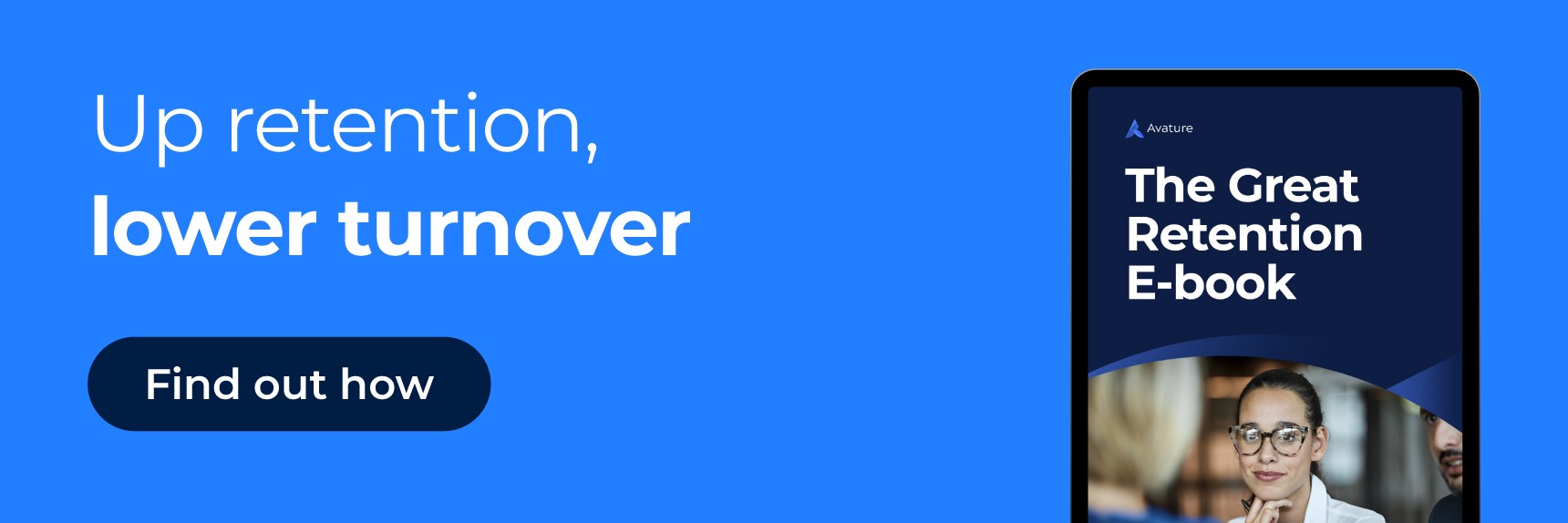For the fourth month in a row, the unemployment rate has remained steady at 3.6 percent, leaving many companies in the unenviable position of having to compete for talent in a tough, candidate-centric market.
Some organizations are struggling to win over candidates for a few essential roles. But for others, they are scrambling to fill hundreds, if not thousands, of open positions across multiple regions with the compounded pressure of the Great Resignation, a context in which employees are quitting their jobs at record-high rates.
This harsh reality is making organizations rethink their high-volume hiring strategies, seeking new ways to make the most of their time and optimize processes. Without the proper tools, this recruitment style can leave companies overwhelmed and unable to handle the influx of job seekers. After all, with an increasing number of candidates comes an increase in hiring responsibility.
In a recent webinar, we tackled some best practices every organization may find handy when it comes to high-volume hiring. Grab a pen and some paper and let’s dive in!
#1: Don’t Start High Volume Hiring From Scratch
We have two words for you: internal database. Plunging into your internal database can seem like a time-consuming task, one reminiscent of Velma from Scooby Doo blindly looking for her glasses in total darkness.
However, a talent platform with comprehensive search functionality can be key to helping you rediscover pre-considered candidates with whom you’ve already been in touch. Leveraging this database can prove incredibly helpful when tackling high-volume hiring and racing against the clock, since you’re not searching from scratch but instead tapping into talent that’s already aware of your organization and showed an interest in working for you.
There are different ways you might choose to leverage your database, but here are two strategies to get you started:
- Silver medallists: Often, there are people who are qualified for the role but were beat to the post, and these candidates might be interested in hearing about a new opportunity. Within your talent platform, you can quickly create a list of all those who almost made it to the finish line in similar searches.
- Contingent talent: If you’ve adopted a total talent approach, you might be lucky enough to have visibility of the contractors and freelancers that have worked well in previous projects. The most forward-thinking organizations are shifting ownership of this vital talent segment from procurement to HR, gaining a comprehensive vision of available skills in their workforce and aligning the contractor experience with employees. By creating networks of contingent workers that have been engaged and collecting feedback on performance, you’ll be able to reach out to this group when a new opportunity opens up and engage appropriately skilled individuals.
If your talent platform offers AI-powered tools, finding hidden gems in your database becomes even easier. Once you’ve clearly defined the skills and experience you’re looking for, the technology can do the heavy lifting, recommending candidates that might be the perfect match.
In addition to saving your recruiters valuable time and speeding up the hiring process, powerful algorithms are likely to uncover suitable candidates that recruiters may have missed through a traditional search.
#2: Streamline Processes for High Volume Hiring
When facing large amounts of applicants, teams can end up completely overwhelmed, and the experience can fall flat for both candidates and hiring teams. Having the right technology in place can make high volume hiring less burdensome and more organized and streamlined. Let’s consider some specific examples:
- Recorded on-demand video interviews: Candidates can record their answers at a convenient time, and hiring teams can review them whenever they choose. This feature eliminates any scheduling pain points and can help recruiters handle large amounts of worldwide candidates more efficiently.
- Knock-out questions: Eliminate unqualified candidates quickly, speeding up the search for the best talent and optimizing your hiring team’s time.
- Automated communications: Empower your team to automate and send communications from the same platform. They’ll be able to send mass invites for candidates to record their interview via a unique link, using smart personalization tokens to ensure an individualized tone while providing instructions to multiple applicants at once.
- Auto scheduler: Streamline the interview process by implementing a tool that helps eliminate the hassle of back-and-forth emails and allows recruiters to overcome any scheduling challenges. This tool optimizes time and enables stakeholders to invite attendees without overbooking, bettering the candidate and recruiter experience.
#3: Tailored Stakeholder Experiences
Successful high volume hiring relies on collaborating with other stakeholders that don’t regularly participate in the recruiting process. Such is the case for hiring managers, who put on their recruitment hat temporarily while attending to their usual responsibilities.
When looking to lighten the load for relevant stakeholders, technology can be leveraged to deliver a tailored experience that makes their lives as easy as possible. For example,in the retail industry, high volume hiring is a common practice due to the large numbers of entry-level candidates and seasonal demand. These situations are where store managers can use extra help. Time is valuable as managers are constantly on the move and busy taking care of their usual managerial duties, while tasked with additional recruiting responsibilities .
Creating an intuitive and easy-to-use store manager portal will accelerate the interview process by acting as a one-stop shop where they can review and carry out any pending tasks and perform massive actions, such as disqualifying candidates.
To understand if their high volume hiring efforts are working, the portal should also provide clarity into hiring progress through visual reports that can be understood at a glance. These might include time to fill (to better grasp how long it’s taking to fill each role), hires per source (to evaluate how well your strategies and traction tools are working), or seasonal openings (to understand how many roles have been filled).
Onsite events are another scenario where high volume hiring can fail if the stakeholder experience isn’t up to par. To ensure event ROI and meet challenging recruitment objectives, on-site staff must interview a vast number of candidates. But, without the right technology, tracking feedback and identifying the most qualified candidates is impossible.
Implementing an events portal can transform the experience for those on the ground and drive positive hiring outcomes. Rather than drowning in paperwork, candidate data is recorded digitally and through mobile devices, feedback is collected centrally in real-time for your whole team to access, and action can be taken quickly, such as inviting a strong candidate to the next step in the process. An events portal helps everyone keep up on the go, preserving time and resources.
#4: Power Tools That Nail the High Volume Hiring Experience
As we’ve mentioned, companies compete to attract talent in time-sensitive scenarios such as seasonal hiring or hiring for a new location. When turning to high volume hiring, one way to reach large numbers of candidates and find top talent is by leveraging your power tools, such as campaigns.
You’ll be able to get a lot more from your campaigns by using a platform where you can carry out all your recruitment marketing activities centrally and operate holistically across channels. As such, you’ll gain better visibility of all of your planned email engagements, SMS and social media campaigns and landing pages, as well as be able to keep track of campaign performance and current status.
The best platforms provide robust but intuitive reports that capture your audience’s response and the effectiveness of each channel so you can optimize efforts as you progress .
You can even take it one step further and pair all of this with smart automation, allowing the technology to do lots of the heavy lifting – a useful tool in the context of high-volume recruiting. The main benefit here is that you optimize stakeholders’ time and free them up to engage new leads without the added hassle of managing all their campaigns.
Bankers Life’s story is just one of the many examples of how automation can help with the heavy lifting. As a leading health and life insurance company, they looked to Avature to help with the hiring process of insurance agents nationwide by building a strong, fully automated sourcing and pre-screening process.
Through our websources feature, they were able to develop a configuration of saved searches with specific filters to target their ideal talent. They also conducted scheduled searches of 10 thousand candidates that ran automatically, even after office hours. As a result, all the new candidates were added to their database through automation and were linked to a specific branch according to their location.
They were also very interested in the candidate journey, which is why they customized emails sent at each stage of the process; some even included an invitation to self-schedule informational sessions through a portal. Automated communications were also sent to dispositioned candidates, ensuring they’d never be ghosted and stayed engaged in future communications.
As a result, Bankers Life is currently housing 10 million candidates in their Avature instance, and all of them are 100 percent engaged.
#5: Measure, Track and Review Your High Volume Hiring Efforts!
But efforts can’t end at implementation. Once you’ve deployed your high-volume hiring strategies, it’s essential to understand how they’re performing. Without this information, you won’t recognize where you’re succeeding and where you’ll need to rework your efforts. So what can your organization do to measure, track and review them? We recommend a three-pronged approach!
- Report on candidate source data and career site metrics. Understanding how things work at the top of the funnel lets you figure out how best to allocate resources. If most qualified candidates are from Facebook campaigns, you might want to allocate more budget to that channel.
- Report on processes. This helps to identify bottlenecks and places where you might want to streamline and potentially incorporate more automation.
- Report on experience. Surveys can help you better understand how to improve the experience and build trust for smoother collaboration, ultimately enabling more efficient recruiting. You can ask candidates, hiring managers and other stakeholders to provide feedback on each part of the experience.
To Conclude…
The current talent landscape can overwhelm even the most experienced of recruiters. Companies are constantly looking to innovate to compete for the right talent that meets their business needs.
Alongside a smart talent platform, implementing these high volume hiring best practices can make the entire experience one that makes a difference for all stakeholders involved. Finding the right people is not enough; the entire process and experience need to be as smooth as possible for your talent strategy to succeed.



